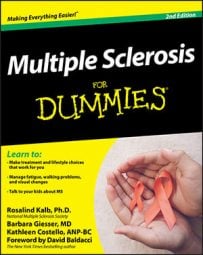CAM, short for complementary and alternative medicine, includes the substances or therapies that a person with multiple sclerosis (MS) chooses to use along with the treatments prescribed by his or her physician (complementary), as well as those that a person uses instead of prescribed treatments (alternative). Most people with MS are choosing to use the nontraditional therapies as a complement to their regular MS treatment.
Over the years, CAM has been defined in several different ways, with the defining characteristic being that the practices fell outside of traditional medicine. Today, more and more researchers are trying to evaluate these interventions with the same rigorous studies that have traditionally been used to evaluate standard treatments.
As any CAM therapy or substance demonstrates its safety and effectiveness in clinical trials, it makes its way into mainstream medicine. Exercise, for example, is now recognized as an important component of regular healthcare.
The National Institutes of Health divides CAM into the following categories:
-
Biologically based therapies: This category includes special diets; herbal medicine; vitamin and mineral supplements; and pharmacologic, biological, and instrumental therapies (for example, bee venom therapy, candida treatment, chelation therapy, cooling therapy, removal of dental amalgams, enzyme therapy, and hyperbaric oxygen therapy).
-
Alternative medical systems: These systems include acupuncture and traditional Chinese medicine, Ayurveda, and homeopathy.
-
Lifestyle and disease prevention: In this category, the main approach considered is exercise.
-
Mind-body medicine: This group includes treatments such as biofeedback, hypnosis and guided imagery, meditation, music therapy, pets, prayer and spirituality, T’ai Chi, and yoga.
-
Manipulative and body-based systems: Massage body work (for example, chiropractic, Feldenkrais, pilates, reflexology, and Tragerwork) and unconventional physical therapies (colon therapy and hippotherapy) make up the treatments in this category.
-
Biofield medicine: Therapeutic touch is in this category.
-
Bioelectromagnetics: This category includes magnets and electromagnetic therapy.
CAM is a huge industry in the United States, encompassing a wide variety of practitioners and products. The first step to becoming an educated consumer of CAM products and services is to understand their allure. For example, consider the following reasons why people are attracted to CAM:
-
People like the idea of taking control of their bodies, their lives, and their health. Products that claim to offer that kind of control have wide appeal.
-
Safe, healthy, and natural are all buzzwords these days. They’re used to promote a lot of products, including some that are safe and healthy and some that aren’t. Because of the way they’re advertised, many consumers believe that the products they can buy without a prescription — in a grocery store, pharmacy, or health food store — are somehow safer and healthier than the ones their doctors prescribe.
The simple fact is that we know less about many of them than we know about prescription medications that have been evaluated by medical experts.
-
People living with MS and other chronic diseases are understandably frustrated by the long wait for a cure. The available MS medications don’t cure the disease and are only partially effective in reducing disease activity. They are also expensive. So it’s not too surprising that folks are impatient for something better. To these people, anything that promises to “cure MS” or “strengthen the immune system” sounds like the silver bullet.

